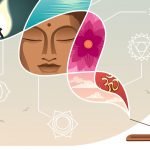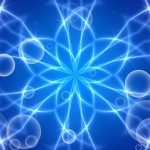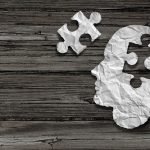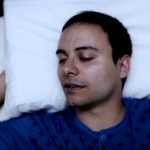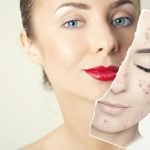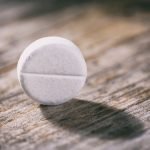Red Light Therapy: How It Can Benefit Your Anti-Aging Regimen
Jannine Krause, ND, EAMP
Naturopathic Perspective
The quest to slow down the aging process is a daunting one, with a plethora of options that seem to be ever-changing, like the “flavor of the month” at a local ice cream shop. In a little over a decade of practice as a naturopathic doctor and acupuncturist, I have discovered a few tools that have stood the test of time to slow down the aging process while also repairing damage and improving cellular health.
Red light and infrared therapy are 2 of my favorite tools to stimulate cellular metabolism and repair. Spectrums of light in the 620-800-nm range activate light-sensitive receptors in the energy-making processes of our cells, and also induce light-driven water-transport molecules. This process enhances molecular exchange in the skin that allows for removal of accumulated toxins, as well as promotes the infusion of molecules specific to cellular repair. In this article I will discuss the how light therapy slows down the aging process by not only rejuvenating the skin, but also by enhancing mobility through reductions of joint and muscle stiffness. I will also discuss how to easily incorporate light therapy into your treatment regimens.
Light Therapy – Some History
To better understand why light therapy is one of the best options you can add to your anti-aging regimen, we must take a look back at how its benefits were discovered. In 1893, a scientist named Niels Finsen published his first paper about the effects of light on the skin. Finsen would later discover that certain wavelengths of light initiate healing properties. His research demonstrating the benefits of ultraviolet light in the treatment of painful facial lesions of those suffering from lupus vulgaris would win him the Nobel Peace Prize in 1903. In 1993, Dr Finsen’s research served as the basis for Quantum Devices, Inc, and for NASA’s joint project to promote plant growth in space using High Emissivity Aluminiferous Luminescent Substrate (HEALS) technology.1
Once NASA determined that they could stimulate plant growth using red LED light, they began extensive clinical trials at the University of Wisconsin at Madison to examine the ability of near-infrared light to relieve muscle spasms, joint pain, and stiffness and to increase blood flow in the tissues where it was applied. Between 1995 and 1998, NASA and the University of Wisconsin conducted research proving red LED light’s benefit on the promotion of cell growth as a way to prevent bone and muscle loss in astronauts in space.2 NASA’s research led to the development of a red LED device called the WARP 10 (Warfighter Accelerated Recovery by Photomodulation), and later the WARP 75, which was used by special forces on the front lines for immediate first-aid care. The WARP 10 debuted in 2005, and the WARP 75, which covers 75 cm (versus the 10’s 10 cm), was available in 2008.3 Since the publication of NASA’s research in the 1990s, many research studies on red light and infrared therapy have demonstrated its benefits on wound healing, metabolism enhancement, and the reduction of fine lines, wrinkles, and acne.
How It Works
How does light therapy work? “Detailed analysis of the gene expression profiles in human fibroblasts revealed an influence of low-intensity red light with a 628 nm wavelength on 111 different genes that are involved in cellular functions, such as cell proliferation; apoptosis; stress response; protein, lipid and carbohydrate metabolism; mitochondrial energy metabolism; DNA synthesis and repair; antioxidant related functions.”4 “Red light therapy causes reactive oxygen species (ROS) to increase fibroblast proliferation and motility, suggesting that the elevation of ROS via photodynamic therapy can enhance the cellular functions of dermal fibroblasts through specific mitogen-activated protein kinase (MAPK) signaling pathways in vitro.”5 Red light and infrared therapy have the potential to increase circulation, capillary formation, lymphatic system movement, ATP production, and testosterone production, as well as boost fibroblast activity and collagen formation.6
Many think of light therapy as dangerous, as they assume that any light therapy contains ultraviolet light. Ultraviolet wavelengths are in the 400-nm range, whereas red light therapy is in the 600-nm range and infrared light runs in the 800-nm range. Red light therapy, in wavelengths of 630-660 nm, has been found to be ideal for skin rejuvenation. A combination of red light therapy at 660 nm and infrared at 850 nm has been found to be the most effective for wound healing, general health and post-workout recovery.4
How long does it take for light therapy to work? The answer depends on the goal of the treatment. On average, pain relief can be achieved in 1 session; however, results do not last unless treatments occur weekly for 9-12 weeks, or twice weekly for 4-6 weeks. Generally, improvements in skin tone and reduction of wrinkles and fine lines can be seen after 12 treatments, 48-72 hours apart, at 15-30 minutes per session.1 On average, 1 session can boost the skin’s appearance, and after 3 sessions pore size is visibly reduced. Sessions in my office are 30 minutes in length using an LED red light therapy flexible panel device, and 20 minutes per specific location using my infrared lamp. According to one company supplying red light therapy devices, “improvement in fine lines and wrinkles can be achieved in 5 minutes a day at 12 inches away from the skin in 8-12 weeks.” This company also notes that “general health benefits from red and infrared light therapy can be achieved in 10 minutes a day at 6 inches away from the body daily.”8 In my office, we find that red and infrared light therapy results are optimal when the patient has 12 sequential sessions that are 2-3 days apart. I have found that results are best maintained with bi-monthly-to-monthly treatment sessions after the initial therapy course. Unfortunately, there isn’t sufficient quality research data out there to support my findings at this time.
Applications & Instructions
Light therapy induces tissue healing and detoxification. In order to achieve optimal results, consuming a “clean” diet closest to nature is highly recommended, as the body is only able to heal itself if 1) there are sufficient nutrients available to induce repair; and 2) there are not excessive amounts of toxins coming in at the same time. I recommend that digestive system issues be addressed as well, since the gut lining status is reflected in the skin. Thus if you or your patients are suffering from small intestinal bacterial overgrowth (SIBO), Candida overgrowth, leaky gut, constipation, diarrhea, irritable bowel syndrome, psoriasis or eczema, to name a few common issues, make sure you are working to address these conditions in order to obtain ideal results.
In addition to applying my light therapy devices to the face, neck and hands to induce collagen production and reverse damage to aging skin, I use light therapy to stimulate the healing of wounds and post-workout recovery and for the treatment of tendon, ligament and muscle injuries, stiffness, and pain. I often combine the light therapy with peels, micro-needling, acupuncture, cupping, guasha, and trigger-point injections.
I utilize 2 main devices. One is a TDP lamp (Teding Diancibo Pu), which is a special electromagnetic spectrum lamp. This type of light therapy is best for pain, stiffness, and muscle spasms. The ionized plate heats up and emits invisible, infrared light that penetrates up to 3 inches into the skin and can increase circulation to areas of pain and stiffness. The other device I use is the LED red light therapy flexible panel device, which is a red, blue, and infrared light combination light pad that can be placed over the face, neck, any joint, the back, abdomen, or gluteal muscles to target areas of pain or in need of rejuvenation, or be used to enhance cellular detox of areas prone to cellulite. This device is easy to use during an acupuncture treatment or after a micro-needling, facial, or peel session to enhance results.
Specific precautions must be taken with the TDP lamp, as it emits heat, whereas the LED red light therapy device does not. To ensure that the TDP lamp does not burn the surface skin of the patient, I generally do not leave the lamp in the same location for more than 20 minutes, and it must be at least 6 inches away from the skin surface. The LED red light device does not have a distance restriction; however, I keep it 2 inches from the skin surface and ensure that my patients wear protective goggles to protect the eyes when the device is used over the face.
Light therapy is best used frequently and on a regular basis to continually stimulate cellular metabolism. Our cells contain little factories in them. Anything that ages, whether it be cars, washing machines, or all the cells in our bodies, requires maintenance. As we age, circulation to our cells becomes less efficient, causing skin, muscles, ligaments, and tendons to become dehydrated, malnourished, and toxic. Insufficient flow of water and nutrients to the skin prevents skin cells from properly repairing and detoxifying themselves. This results in cellulite formation, as well as thinning, drooping skin, and the formation of fine lines and wrinkles. At the same time that the exterior skin is gradually damaged, the muscles, tendons and ligaments become less mobile, more prone to injury, and filled with toxins, all of which can contribute to stiffness, pain, and swelling.
Summary
By utilizing light therapy, one can either cue the body to enhance metabolism in a large area, for total body cellular enhancement, or focus on a specific area of damage or pain. In addition to the TDP lamp and the LED red light therapy flexible panel device, red and infrared light panels and saunas are available that can stimulate the entire body. An LED red light therapy hanging wall panel is one example of a body light panel, and high-quality home infrared saunas are also available. All are great investments in your individual and patient’s health. Some companies are now offering the option of renting light therapy devices for the duration of the desired treatment, to increase compliance.
As red light therapy evolves, more options will become available to you and your patients. I highly recommend adding these therapies to your practice, as they are a great way to enhance results while also adding to your income stream.
References:
- Barolet D. Light-emitting diodes (LEDs) in dermatology. Semin Cutan Med Surg. 2008;27(4):227-238.
- Nasa Spinoff. Lighting the Way for Quicker, Safer Healing. 2005. Nasa Web site. https://spinoff.nasa.gov/Spinoff2005/hm_1.html. Accessed January 8, 2018.
- Nasa Spinoff. LED Device Illuminates New Path to Healing. 2008. Nasa Web site. https://spinoff.nasa.gov/Spinoff2008/hm_3.html. Accessed January 8, 2018.
- Zhang Y, Song S, Fong CC, et al. cDNA microarray analysis of gene expression profiles in human fibroblast cells irradiated with red light. J Invest Dermatol. 2003;120(5):849-857.
- Jang YH, Koo GB, Kim JY, et al. Prolonged activation of ERK contributes to the photorejuvenation. J Invest Dermatol. 2013;133(9):2265-2275.
- Zastrow L, Groth N, Klein F, et al. The missing link–light-induced (280–1,600 nm) free radical formation in human skin. Skin Pharmacol Physiol. 2009;22(1);31-44.
- Wunsch A, Matuschka K. A controlled trial to determine the efficacy of red and near-infared light treatment in patient satisfaction, reduction of fine lines, wrinkles, skin roughness, and intradermal collagen density increase. Photomed Laser Surg. 2014;32(2):93-100.
- Treatment Guidelines for Red Light Therapy. Joovv Web site. https://joovv.com/pages/treatment-guidelines-red-light-therapy. Accessed January 8, 2018.
Image Copyright: <a href=’https://www.123rf.com/profile_rangzen’>rangzen / 123RF Stock Photo</a>
 Jannine Krause, ND, EAMP, is a naturopathic doctor, acupuncturist, and host of the podcast “The Health Fix.” She is the owner of Q Vitality Studio in Tacoma, WA, where she specializes in “Q-ing” the body to be its best from the inside out. Doc J specializes in anti-aging and sports medicine, pain management, and teaching the brain to manage stress effectively. When not in the studio, she can be found paddle boarding, skiing, whipping up good food in her kitchen, or playing with her dog, Bear.
Jannine Krause, ND, EAMP, is a naturopathic doctor, acupuncturist, and host of the podcast “The Health Fix.” She is the owner of Q Vitality Studio in Tacoma, WA, where she specializes in “Q-ing” the body to be its best from the inside out. Doc J specializes in anti-aging and sports medicine, pain management, and teaching the brain to manage stress effectively. When not in the studio, she can be found paddle boarding, skiing, whipping up good food in her kitchen, or playing with her dog, Bear.




